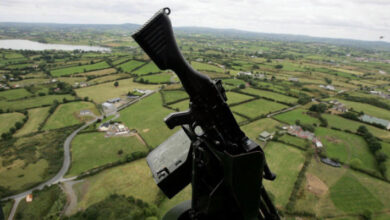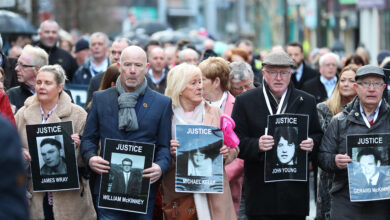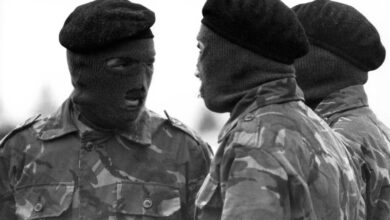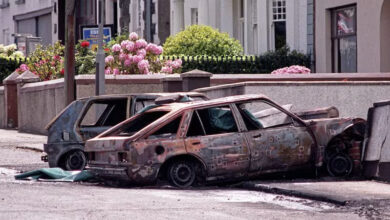Rapporto Saville: tardivo e costoso. Anche inutile?
The Saville report: late, costly – and unnecessary, too?
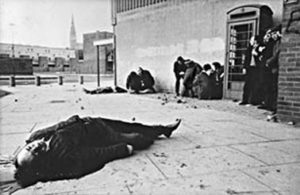 On 22 March next year, Lord Saville of Newdigate expects to deliver to the government the report of the Bloody Sunday inquiry. The word “expects” has been used before. The public hearings ended in November 2004, and the report has been expected – or at least hoped for – from 2006 onwards. The inquiry has already cost, according to a parliamentary answer last week, more than £189m, about half of which was paid out in legal fees.
On 22 March next year, Lord Saville of Newdigate expects to deliver to the government the report of the Bloody Sunday inquiry. The word “expects” has been used before. The public hearings ended in November 2004, and the report has been expected – or at least hoped for – from 2006 onwards. The inquiry has already cost, according to a parliamentary answer last week, more than £189m, about half of which was paid out in legal fees.
But let us assume that the March date will be kept. It doesn’t mean the Saville report will be made public soon afterwards. The government has first to study and consider it – it’s rumoured to be 5,000 pages long – before releasing it to us. A few months later, parliament will be able to have a debate on it. But hold on a moment. Isn’t there going to be a general election in May? Will the government, fighting for its very existence, be in the mood, or have the time, to think about an inquiry that was first announced in the early days of the Blair era, in January 1998?
It’s even possible that the election would be in March, which might mean that Saville would be handing in his report to a new administration, one that would never have commissioned it in the first place and is hardly likely to be interested in it now.
No one has been able to satisfactorily explain why the inquiry has taken so long. Saville isn’t talking. But now the much-respected barrister, author and campaigner Sir Louis Blom-Cooper QC has weighed in with a sharp critique of Saville’s approach to the inquiry and his method of conducting it. Writing in the legal journal Public Law, Blom-Cooper accuses Saville of “indulging in an unnecessary exercise”.
The terms of reference of the inquiry were “to inquire into the events of 30 January 1972 which led to the loss of life in connection with the procession in Londonderry on that day”. Saville had two options, says Blom-Cooper. The first was to investigate each death in detail, to ascertain which soldier had shot dead which unarmed civil rights protester; and whether the force used was reasonable. The second option “was to assume the death of each of the 14 victims was the result of direct military action against the victim, without determining precisely how each one had been killed, and which soldier had been directly responsible for firing the fatal shot”.
To put it bluntly, Blom-Cooper says that Saville – without apparently discussing his terms of reference with the government – took the wrong path. His decision ensured that the inquiry would be exceptionally lengthy and outrageously expensive. Moreover, it was unnecessary: the inquiry was specifically prohibited from ruling on any individual’s criminal or civil liability. No soldier would face trial, whatever the findings of the inquiry.
Blom-Cooper backs his case further by arguing that detailed witness evidence about events 30 years ago could not be treated with confidence anyway, because of failing and distorted memories, and the huge volume of publicity and debate since then. Saville’s approach, he concludes, “deprived the inquiry of a reasonably conducted inquiry into what went wrong”.

